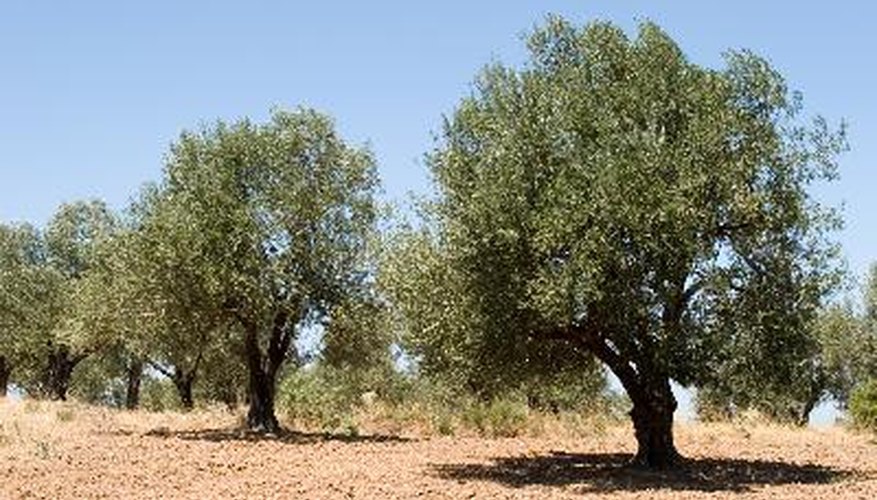The olive tree (Olea europaea L.) is a subtropical evergreen grown ornamentally for its attractive foliage and bark as well as agriculturally for its fruit, which is edible after processing. Olives can grow in a variety of soils, are drought tolerant and can efficiently extract nutrients from the soil. However, the leaves on an olive may begin to turn yellow for a number of reasons.
Nutritional Deficiency
Nitrogen is most frequently lacking nutrient in olive trees. Trees suffering from a nitrogen deficiency have yellow-tinged leaves and poor growth. this deficiency is most prevalent in heavy soils during cold and wet weather when nitrogen is less available. Symptoms of deficiency will often disappear by early summer. A potassium deficiency manifests as light green leaves or tip burn on leaves.
- Nitrogen is most frequently lacking nutrient in olive trees.
- A potassium deficiency manifests as light green leaves or tip burn on leaves.
Addressing Nutritional Deficiencies
Nitrogen should be applied around olive trees regularly to prevent the symptoms of deficiency. Depending on the size of the plant, mature olives need between one-half and two pounds of nitrogen annually. Apply fertiliser in December to aid fruit development, in spring to fuel new growth and, if necessary, in the summer if the tree is growing poorly.
Improper Water
Olive tree leaves can turn yellow if they receive too little or too much water. Although the olive is drought tolerant it performs optimally when there is sufficient available water. Maintain an adequate irrigation routine during periods of drought. If soil is waterlogged and aeration is subsequently poor, the tree roots will deteriorate or rot and leaves will turn yellow as a result. This is best avoided by choosing a proper site or amending the soil as needed prior to planting. otherwise, adjust irrigation practices or consider mechanically improving aeration to address the drainage issue.
- Olive tree leaves can turn yellow if they receive too little or too much water.
- This is best avoided by choosing a proper site or amending the soil as needed prior to planting.
Normal Seasonal Drop
Although olive trees are technically evergreens, they still shed leaves. Most leaves only live two or three years. Leaf yellowing and drop is most common in the spring but can occur in small quantities throughout the year. This type of yellowing and leaf drop should not be alarming unless a disproportionate amount of leaves are affected.
- Although olive trees are technically evergreens, they still shed leaves.
- This type of yellowing and leaf drop should not be alarming unless a disproportionate amount of leaves are affected.
